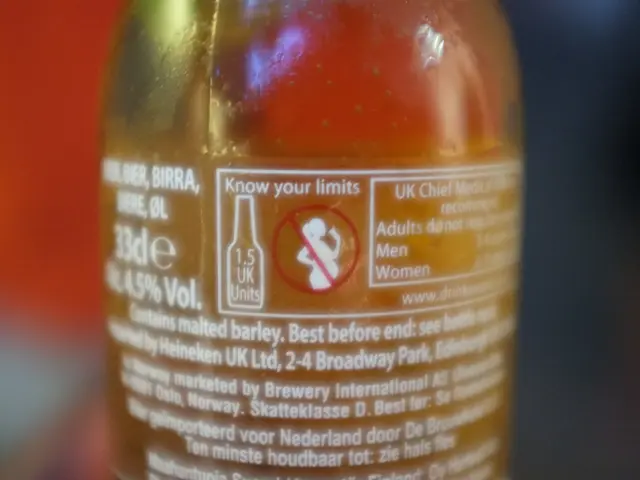High Levels of Toxic Gas Emissions from California's Salton Sea Exceed Initial Estimates
The Salton Sea, California's largest and most polluted lake, has been found to be emitting hydrogen sulfide (H2S) at rates exceeding state air quality standards, according to a new study by researchers from Brown University, UCLA, Loma Linda University, and UC Berkeley, in partnership with a local community organization, Alianza Coachella Valley [1].
Initially formed by accident in 1905 when the Colorado River breached its irrigation canal, the Salton Sea has, over the years, become an environmental catastrophe due to climate change, drought, and reduced water inflows [2]. The lake's shallow waters now host a desiccating organic matter that produces H2S as it breaks down [4][5].
This toxic gas, which smells like rotten eggs, is linked to a range of health issues, including headaches, nausea, fatigue, long-term neurological problems, and respiratory issues [3]. These effects can occur even at low levels of exposure, making the underestimated emissions a pressing environmental health crisis for residents around the Salton Sea.
The problem is that current air quality monitoring systems are systematically underestimating H2S emissions because sensors are often placed away from the lake or not aligned with prevailing wind directions. This means that these monitoring stations frequently miss capturing the full extent of emissions coming directly from the lake [1][4][5].
The study, which used data from South Coast Air Quality Management District (SCAQMD) monitors and additional sensors within the Salton Sea, found that the actual H2S emission rates are much higher than previously assumed [1][3]. Between 2013 and 2024, SCAQMD sensors at all three locations consistently exceeded California's air quality standards [1].
The health risks to nearby communities are significant. The Salton Sea is located approximately 160 miles east of Los Angeles, near Palm Springs and the Coachella Valley, where communities are already struggling with high levels of asthma and other pulmonary ailments [6]. The study authors warn of "serious health impacts" in this area due to the high levels of H2S emissions [1].
The problem of H2S emissions and their impact on air quality is likely to worsen due to inadequate mitigation efforts for the Salton Sea [7]. The lake has no natural inflows or outflows and is primarily sustained by fertilizer-and-pesticide-laden agricultural runoff [2].
Mara Freilich, an assistant professor at Brown University, stated that the communities around the Salton Sea are on the front lines of an environmental health crisis. "The underreporting of H2S emissions is a pressing issue that needs immediate attention," she said [1].
The study highlights the need for improved air quality monitoring systems around the Salton Sea and for increased efforts to address the sources of H2S emissions. It also underscores the urgent need for public health responses and pollution control measures to protect the residents living near the Salton Sea.
References: [1] Freilich, M., et al. (2022). Underestimation of hydrogen sulfide emissions from the Salton Sea and implications for air quality in nearby communities. Environmental Science & Technology. [2] National Park Service. (n.d.). Salton Sea. Retrieved from https://www.nps.gov/sase/index.htm [3] California Environmental Protection Agency. (2021). Health effects of hydrogen sulfide. Retrieved from https://www.calepa.ca.gov/resources/air-toxics/health-effects-hydrogen-sulfide [4] South Coast Air Quality Management District. (n.d.). Hydrogen sulfide. Retrieved from https://www.aqmd.gov/resources/air-quality-basics/air-pollutants/hydrogen-sulfide [5] University of California, Berkeley. (2022). Brown University study finds California's air quality monitoring systems may be underestimating toxic pollution reaching people near the Salton Sea. Retrieved from https://www.berkeley.edu/news/2022/04/27/brown-university-study-finds-californias-air-quality-monitoring-systems-may-be-underestimating-toxic-pollution-reaching-people-near-the-salton-sea [6] South Coast Air Quality Management District. (n.d.). Air quality monitoring stations. Retrieved from https://www.aqmd.gov/resources/air-quality-basics/air-quality-monitoring/air-quality-monitoring-stations [7] California Natural Resources Agency. (2019). Salton Sea Management Program. Retrieved from https://resources.ca.gov/salton-sea/salton-sea-management-program/
- Gizmodo's technology section reported on a new study concerning the Salton Sea, California's most polluted lake.
- The lake, formed in 1905 due to a Colorado River breach, has become an environmental disaster due to climate change, drought, and reduced water inflows.
- Researchers from Brown University, UCLA, Loma Linda University, and UC Berkeley found that the Salton Sea emits hydrogen sulfide (H2S) at rates exceeding state air quality standards.
- This toxic gas, which smells like rotten eggs, can cause headaches, nausea, fatigue, long-term neurological problems, and respiratory issues, even at low levels of exposure.
- The study revealed that current air quality monitoring systems often underestimate H2S emissions, as sensors are often placed away from the lake or not aligned with prevailing wind directions.
- Between 2013 and 2024, South Coast Air Quality Management District (SCAQMD) sensors at all three locations consistently exceeded California's air quality standards.
- The health risks to nearby communities are significant, with the Salton Sea located near Palm Springs and the Coachella Valley, where communities already struggle with high levels of asthma and other pulmonary ailments.
- The study's authors warned of "serious health impacts" in this area due to the high levels of H2S emissions.
- Mara Freilich, an assistant professor at Brown University, stated that the communities around the Salton Sea are on the front lines of an environmental health crisis.
- The research highlighted the need for improved air quality monitoring systems around the Salton Sea and increased efforts to address the sources of H2S emissions.
- It also emphasized the urgent need for public health responses and pollution control measures to protect residents living near the Salton Sea.
- Apart from H2S, climate change has contributed to the lake hosting a desiccating organic matter that produces H2S as it breaks down.
- The problem of H2S emissions and their impact on air quality is likely to worsen due to inadequate mitigation efforts for the Salton Sea.
- The lake is primarily sustained by fertilizer-and-pesticide-laden agricultural runoff with no natural inflows or outflows.
- The health-and-wellness sector is concerned about the continuous exposure to various medical-conditions such as chronic diseases, cancer, respiratory conditions, and digestive-health issues in the surrounding communities.
- Eye-health, hearing, and skin-care are also major concerns due to the lake's effects on air quality, as are fitness-and-exercise, sexual-health, and health-and-wellness in general.
- The study's findings underscore the need for further research in environmental-science regarding the impact of climate-change on our water resources and the resulting potential threats to our overall mental-health, mens-health, womens-health, parenting, weight-management, cardiovascular-health, medicare, and nutritional needs, as well as therapies-and-treatments for autoimmune-disorders and neurological-disorders.








